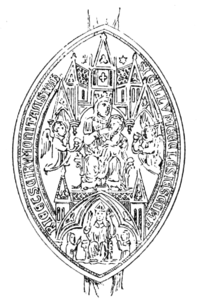Lyfing of Winchester was an Anglo-Saxon prelate who served as Bishop of Worcester, Bishop of Crediton and Bishop of Cornwall.
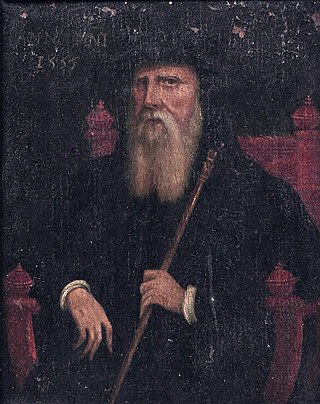
John Russell, 1st Earl of Bedford was an English royal minister in the Tudor era. He served variously as Lord High Admiral and Lord Privy Seal. Among the lands and property he was given by Henry VIII after the Dissolution of the Monasteries, were the Abbey and town of Tavistock, and the area that is now Covent Garden. Russell is the ancestor of all subsequent Earls and Dukes of Bedford and Earls Russell, including John Russell, Prime Minister of the United Kingdom, and philosopher Bertrand Russell.

Tavistock is an ancient stannary and market town in West Devon, England. It is situated on the River Tavy, from which its name derives. At the 2011 census, the three electoral wards had a population of 13,028. The town traces its recorded history back to at least 961 when Tavistock Abbey, whose ruins lie in the centre of the town, was founded. Its most famous son is Sir Francis Drake.

Antony is a coastal civil parish and a village in Cornwall, England, United Kingdom.
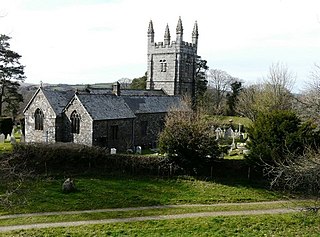
Lydford, sometimes spelled Lidford, is a village and civil parish, in Devon, seven miles (11 km) north of Tavistock on the western fringe of Dartmoor in the West Devon district. The parish covers an area of 50,000 acres (200 km2), and at the 2021 census had a population of 370.

Ruan Lanihorne is a civil parish and village in south Cornwall, England, United Kingdom. The village is situated approximately four miles (6.5 km) east-southeast of Truro between the River Fal and its tributary the Ruan River.

Sir Hugh de Courtenay, 2nd/10th Earl of Devon, 2nd Baron Courtenay, feudal baron of Okehampton and feudal baron of Plympton, played an important role in the Hundred Years War in the service of King Edward III. His chief seats were Tiverton Castle and Okehampton Castle in Devon. The ordinal number given to the early Courtenay Earls of Devon depends on whether the earldom is deemed a new creation by the letters patent granted 22 February 1334/5 or whether it is deemed a restitution of the old dignity of the de Redvers family. Authorities differ in their opinions, and thus alternative ordinal numbers exist, given here.
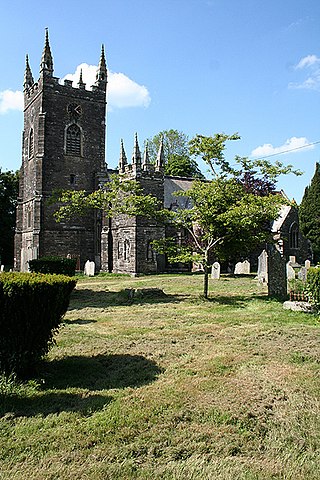
Werrington is a civil parish and former manor now in Cornwall, England, United Kingdom. Prior to boundary changes it straddled the Tamar and lay within the county of Devon. The portion on the west side was transferred to Cornwall by the abolition of Broadwoodwidger Rural District by the Local Government Commission for England in 1966. It is situated 1 mile (1.6 km) to the west of the Tamar, the traditional boundary between Devon and Cornwall, and 1 mile (1.6 km) north of Launceston.
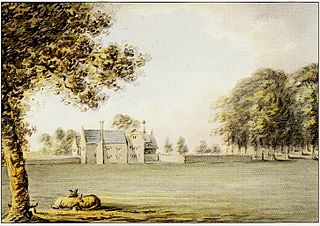
Cowick is a suburb of the City of Exeter in Devon. Historically it was a manor situated in the parish of St Thomas, Exeter, within the hundred of Wonford. It was formerly the site of a Benedictine monastery.
Newenham Abbey was a Cistercian abbey founded in 1247 by Reginald II de Mohun (1206–1258) on land within his manor of Axminster in Devon, England. The site of the ruined abbey is a short distance south-west of the town of Axminster.
Ordgar was Ealdorman of Devon in England. He was a great West Country landowner and apparently a close advisor of his son-in-law Edgar the Peaceful, king of England. His daughter Ælfthryth was King Edgar's third wife and was the mother of King Æthelred the Unready. He was created an ealdorman by King Edgar in 964.
The surname Denys was borne by at least three prominent mediaeval families seated in Gloucestershire, Somerset and Devon in southwest England between 1166 and 1641. It is not known if any relationship existed between these families. The surname Denys is just one of many variant spellings of the name: Denise, Le Deneis, Le Danies, le Deneys ,and most recently Dennis, are some of the others.

Endsleigh Cottage is a country house near Milton Abbot, about 6 miles NW of Tavistock, Devon in England. It is a Grade I listed building. The gardens are Grade I listed in the National Register of Historic Parks and Gardens. The house was built in the early 19th century for the Duke of Bedford. Today, it is a hotel.

Sir Thomas Denys of Holcombe Burnell, near Exeter, Devon, was a prominent lawyer who served as Sheriff of Devon nine times between 1507/8 to 1553/4 and as MP for Devon. He acquired large estates in Devon at the Dissolution of the Monasteries.

Monkleigh is a village, parish and former manor in north Devon, England. It is situated 2.5 miles (4.0 km) miles north-west of Great Torrington and 3.5 miles (5.6 km) south-east of Bideford. It forms part of the Monkleigh and Littleham electoral ward. The population at the 2011 census was 1,488.

Annery was an historic estate in the parish of Monkleigh, North Devon.
Ordwulf was the son of Ordgar, Ealdorman of Devon. His sister was Queen Ælfthryth, third wife of King Edgar The Peaceful and mother of King Æthelred II The Unready, during whose reign Ordwulf was a major figure.
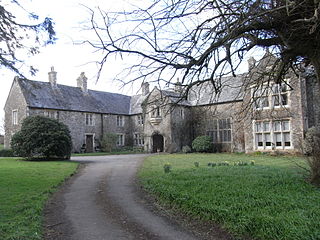
Orleigh is a historic manor in the parish of Buckland Brewer, situated 4 miles to the south west of Bideford, North Devon, England. The manor house is known as Orleigh Court.
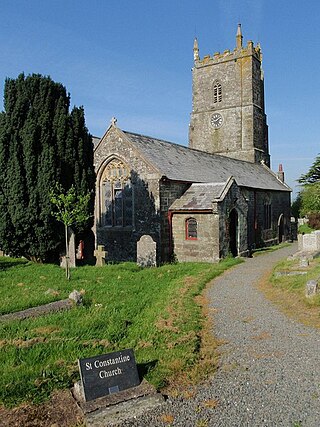
Milton Abbot is a village, parish, and former manor in Devon, 6 miles (9.7 km) north-west of Tavistock, Devon, and 6 miles (9.7 km) south-east of Launceston, Cornwall.
Rumon of Tavistock is a saint venerated in the traditions of the Catholic, Anglican Communion, and Western Orthodox churches.
